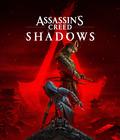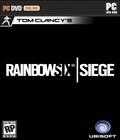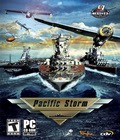Genre: RTS/Combat Flight Simulator
Publisher: CDV/BUKA
Developer: Lesta Studio
Release Date: October 3, 2006
Are you serious about your war gaming? If you like calling the shots, and I mean all of the shots, Pacific Storm may be what you've been looking for. In contrast to the recently released Battlestations: Midway, Pacific Storm is a serious tactical simulation.
Pacific Storm is a hybrid of game genres. First, you have the RTS model where you must manage resources, earn money, and research new technologies. Next, you will need to build up your people, bases, and produce your war machines. The tactical simulation portion has you deploying, supplying and reinforcing your numerous naval assets across a map encompassing the entire Pacific Theater. And thirdly, you have a Combat Flight Simulator which, in addition to numerous sea-based weapons, allows you to participate directly in air engagements in the first-person. Pacific Storm is feature-rich and allows for a high degree of customization. Students of World War II will also identify that a considerable amount of historical research has gone into the game design. Pacific Storm includes 24 ship types, 36 aircraft types, and a large variety of ammunition, weapons and structures. The title covers in detail the entire World War II Pacific Theater, a total of 40 tactical maps covering an area of over 2,000 square miles. Campaigns and missions cover the period between 1940 and 1948.
To get players started, Pacific Storm features a tutorial which explains the interface and controls in three short lessons, and some basic game strategies are covered in three additional lessons. I felt that although the text-only tutorials were helpful, they didn't accomplish much more than to summarize the title's 160-page manual. I personally would have preferred a voice-based tutorial to reduce the already-heavy reading requirement. Even with the in-game tutorial and help system, you will want to keep the printed game manual close by to assist with understanding the importance of each element of this complex simulation.
With Pacific Storm's high level of customization, it is no surprise that the title offers practically an unlimited number of scenarios to play. There are two different single-player modes. In campaign mode, you have the choice of either playing historical or free campaigns. Historical campaigns begin with assets and resources closely matching those that actually existed during the Pacific conflict. The free campaign generally balances assets and resources evenly at the beginning of the game between Japan and the United States. The next available mode of play is called "Tactical Missions." Similar to the campaign mode, you have the ability to play either historical or free "What if?" missions. Pacific Storm includes a full-featured "Tactical Battles Planner" to allow you to create your own "What if?" missions using one of the 40 tactical maps.
At the planning and preparation level, gameplay normally consists of managing your resources, generating and wisely spending money, and building up and distributing your war assets across the battle map. The more sections captured on the map, the more resources and money you will generate. Additionally, you will be given assignments in campaigns, which, if completed within a specified time, will generate additional money. If you fail to complete an assigned mission, you will lose a designated amount of money. Pacific Storm allows you to auto-manage quite a few of the routine tasks in the game, but I found that doing so was not ideal due to the various assignments that you will receive, which will require you to manually re-prioritize research, production and the transporting of resources.
For most gamers, including myself, even with the ability to accelerate the game time and utilize the auto-manage feature, the micromanagement tends to quickly become painfully tedious. Despite speeding up the game clock, the title will frequently pause automatically to provide you with important information you wouldn't want to miss. Since it can be rather difficult to keep up with all of the management activities and engagements in real-time, you can issue orders in pause mode. Additionally, you can assign attack priorities to each class of units such as fighters, bombers, submarines, transports, etc. These additional play features ease some of the chaos that you will likely encounter when playing the multi-year campaign or some of the larger engagements. When any engagement is completed, you are provided with a detailed statistical breakdown of the game's results for analysis.
Although it is not required, it is advisable to use a joystick when playing the air simulator portions of Pacific Storm. Some missions, like bombing Tokyo with your squad of B-29s, only require jumping between gunnery positions and aircraft, while others require you to both fly and fight. I found myself spending quite a bit of time in this area, trying different battle positions and strategies. With so many different units at your disposal, it is quite easy to want to leave the resource management details to the computer, and jump in and get some quality trigger-time against the numerous naval and air targets.
Pacific Storm allows you to create "Battle Planner," "Cooperative" or "Air Simulator" multiplayer games. You can also join existing games on the Internet or a local LAN. As is the case with the single-player modes, you are given a wide degree of control and flexibility when creating a multiplayer match. Everything from weather conditions to specifying the available unit types is completely configurable. As a host, you can even add a number of A.I. participants to multiplayer games. Tactical multiplayer games can have up to eight players, while the cooperative game allows for two players to work together to complete mission objectives.
The graphics in Pacific Storm are well done, the visual styling is attractive and not too busy, which helps to create an uncluttered, easy-to-navigate interface. The 3D environments, including the tactical map, are fast, and object textures are well detailed. Environmental effects are impressive, especially missions occurring at dawn or dusk. Well-executed 3D effects, such as aircraft smoke trails, water spray, wet weather and the inclusion of collision damage to ground objects by air debris, help to make gameplay feel much more realistic and complete. Consider the emotional roller-coaster ride of shooting down an enemy aircraft, just to have it come crashing down onto one of the structures you needed to protect!
With the amount of information to be processed in this tactical and combat simulation, I feel a good overall balance between appearance and functionality was achieved. Pacific Storm did occasionally pause on my fairly high-performance machine, but not at a frequency which was overly distracting or would make the game unplayable. The 3D sounds work well and are appropriate for the numerous war machines and environments. Oddly, the in-game music strikes me as being a bit too modern and mismatched for both the location and the 1940s time period. It would have also been nice if the soundtrack had a Western or Eastern style to it, depending on the side you were playing.
Pacific Storm is a remarkable offering for armchair commanders who enjoy micromanaging all aspects of war. The only real disappointment I had with the game was the mismatched background music. Action-oriented players should find enough variety with the numerous first-person combat options to help offset the somewhat-tedious micromanagement required during lengthy campaigns. Regardless, both of the highly configurable single- and multiplayer segments will provide a superior level of replay value for the money.
Score: 8.5/10
More articles about Pacific Storm










 On December 7, 1941, a major part of the U.S. Pacific navy stationed at Pearl Harbor was assaulted by Japanese planes. Japanese fighters were destroying American aircraft on land and in the air, without giving them a chance for a counterattack.The furious battle of Pearl Harbor became the first in the sequence of gory sea combats.Now you can take part in all major Pacific battles of the World War II in the Pacific Storm game that is a mixture of RTS, war-game and simulator. All major and important sea battles of World War II, which took place in the Pacific Ocean, are included and you can play either for the USA or Japan.Mine the resources (money, iron and nickel ore, bauxites and oil), train various units and retaliate! Sink'em all!
On December 7, 1941, a major part of the U.S. Pacific navy stationed at Pearl Harbor was assaulted by Japanese planes. Japanese fighters were destroying American aircraft on land and in the air, without giving them a chance for a counterattack.The furious battle of Pearl Harbor became the first in the sequence of gory sea combats.Now you can take part in all major Pacific battles of the World War II in the Pacific Storm game that is a mixture of RTS, war-game and simulator. All major and important sea battles of World War II, which took place in the Pacific Ocean, are included and you can play either for the USA or Japan.Mine the resources (money, iron and nickel ore, bauxites and oil), train various units and retaliate! Sink'em all!

































